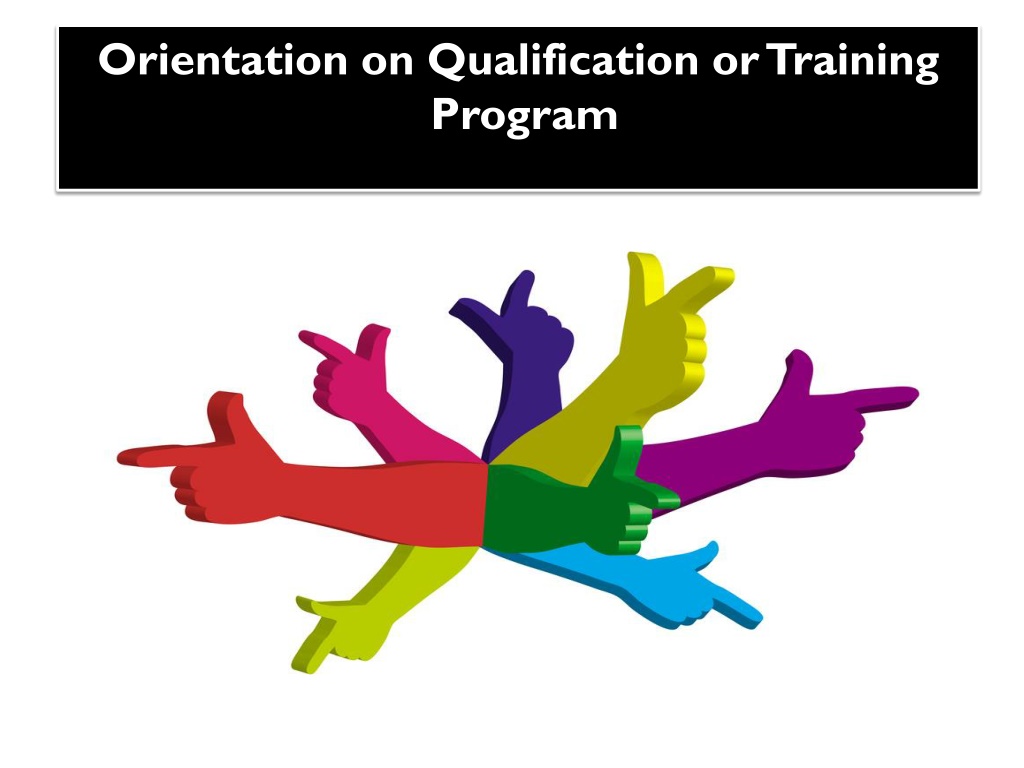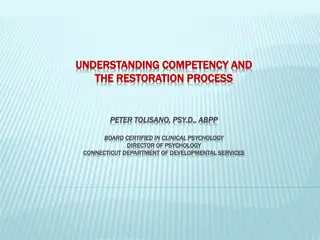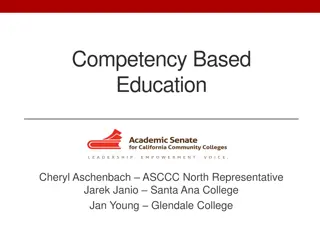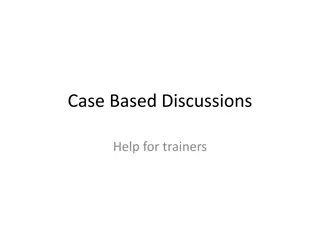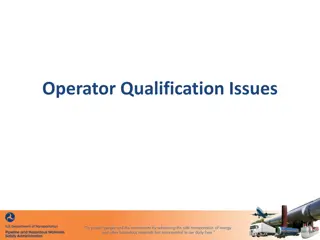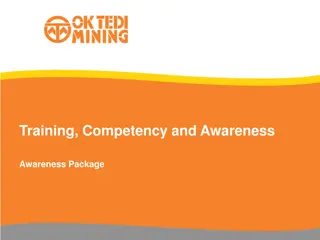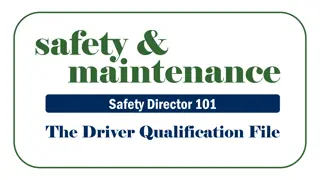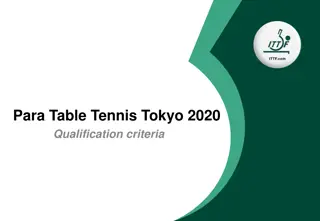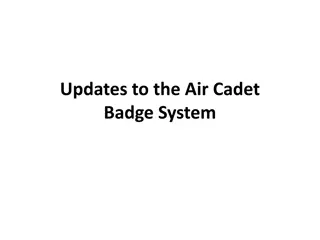Understanding Competency-Based Training in Qualification Programs
Competency-Based Training (CBT) focuses on achieving and applying knowledge, skills, and attitudes to specific competencies. In CBT, trainees are assessed based on performance, and trainers play roles in evaluating student achievements, helping learners obtain rewards, and assisting in personalized study plans. The Bartending NCII Qualification program emphasizes competencies such as cleaning bar areas, operating a bar, mixing cocktails, and providing wine service. This training method ensures individuals acquire the necessary skills to succeed in specific roles within the Hospitality industry.
- Competency-Based Training
- Qualification Program
- Bartending NCII
- Training Competencies
- Hospitality Industry
Download Presentation

Please find below an Image/Link to download the presentation.
The content on the website is provided AS IS for your information and personal use only. It may not be sold, licensed, or shared on other websites without obtaining consent from the author. Download presentation by click this link. If you encounter any issues during the download, it is possible that the publisher has removed the file from their server.
E N D
Presentation Transcript
What is Competency-Based Training? Based Training (CBT) It is concerned with the attainment and application of knowledge, skills, and attitude to a specific level of competency.
In CBT, Trainees have the following roles: Know they will be rated mainly on performance, while paper and pencil tests will be used mainly to check their knowledge of their task. Move freely in the workshop, laboratory, and/or training center.
The following functions outline of the trainer: Evaluates student s achievement. Assists learners to obtain individualized rewards. Assist each trainee in designing a personalized plan of study. Installs confidence in the learner by providing experiences where learners may succeed.
What are the competencies in the training program?
Bartending NC II QUALIFICATION The Bartending NCII Qualification consists of competencies that person must achieve to be able to PREPARE AND MIX COCKTAIL AND NON-ALCOHOLIC DRINKS. This Qualification is packaged from the competency map of Tourism Sector (Hotels and Restaurants).
The Units of Competency comprising this Qualification include the following: CODE NO. CORE COMPETENCIES TRS512395 Clean bar areas TRS512396 Operate bar TRS512397 Prepare and mix cocktails and non-alcoholic concoctions TRS512398 Provide basic wine service
The Units of Competency comprising this Qualification include the following: CODE NO. COMPETENCIES COMMON TRS311201 knowledge TRS311202 TRS311203 TRS311204 TRS311205 Develop and update industry Observe workplace hygiene procedures Perform computer operations Perform workplace and safety practices Provide effective customer service
The Units of Competency comprising this Qualification include the following: CODE NO. 500311105 communication 500311106 Work in a team environment 500311107 Practice career professionalism 500311108 Practice occupational and safety procedures Participate in workplace BASIC COMPETENCIES
The Different Components of a Competency- Based Facility 1. Practical Work Area 2. Learning Resource Area 3. Institutional Assessment Area 4. Contextual Learning Laboratory 5. Quality Control Area 6. Trainers Resource Center 7. Distance Learning 8. Computer Laboratory 9. Support Service Area
Bartending NC II Shop Lay-out ENTRANCE EXIT LEARNER S RESOURCE AREA COMPUTER LABORATORY Quality Control Area RESOURCE AREA TRAINER S DOOR DOOR Support Service Area PRACTICAL WORK AREA DOOR Distance Learning Area DOOR ASSESSMENT AREA COMFOR T ROOM CONTEXTUAL LEARNING AREA
How does the Evaluation System works? NOT COMPENTENT (NYC) COMPETENT (C)
